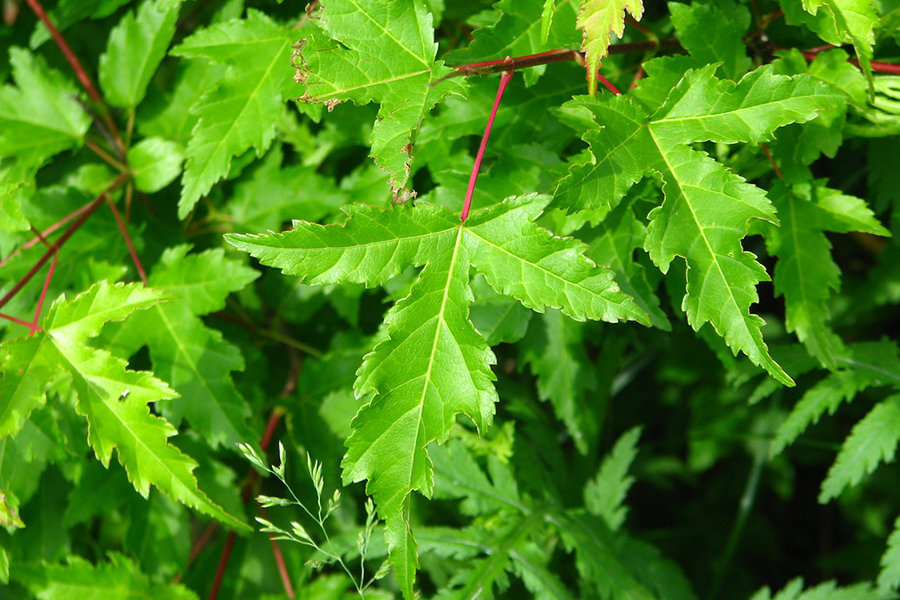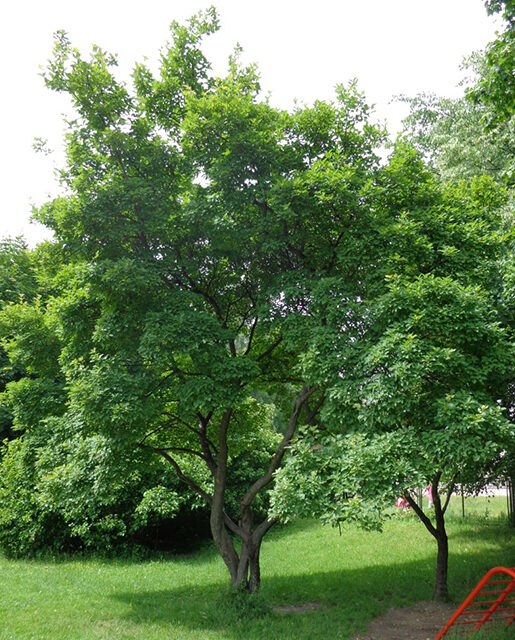Acer ginnala
The Amur maple is small maple with shiny, three-lobed leaves which turn brilliant colors in the autumn.
Location
Nowadays, there are over a dozen Amur maples nestled across the Hadwen Arboretum. A good number of them can be spotted if you walk along the Hidden Spring Trail from start to finish – particularly near the middle of the trail, close to the natural spring. See how many you can find!


History at Hadwen
In Hadwen’s lecture in 1900, he notes the maples are a favourite tree, which well repay the attention they receive. He adds that the whole maple family is one of great beauty and that he has many planted near streets and roads which give an abundance of shade and are the glory in the autumn. The tree surveys conducted in 1971 and from 1974 to 1978 note the abundance of Amur maples in the Hadwen Arboretum.
Keep Learning
Detailed Species Information
The Amur maple is a species of small deciduous tree in the family Sapindaceae native to northeastern Asia and Russia. The Amur maple typically grows to 10–33 feet (3–10 meters) in height and 8–16 inches (20–40 centimeters) in trunk diameter. Its gray bark is smooth when the tree is young and becomes shallowly fissured with age. The Amur maple’s dark green and shiny leaves are three-lobed with serrated edges. In the spring, small, yellow-green flowers emerge and in the fall, the leaves turn brilliant shades of red and orange. The fruit of the Amur maple is two-winged seeds known as samara which are typical of many maple species.
The Amur maple is known for its ability to spread aggressively and can become invasive in some parts of North America. The Amur maple is often used in landscaping as a specimen tree or shrub due to its uniquely shaped leaves, brilliant fall foliage, and small size.
